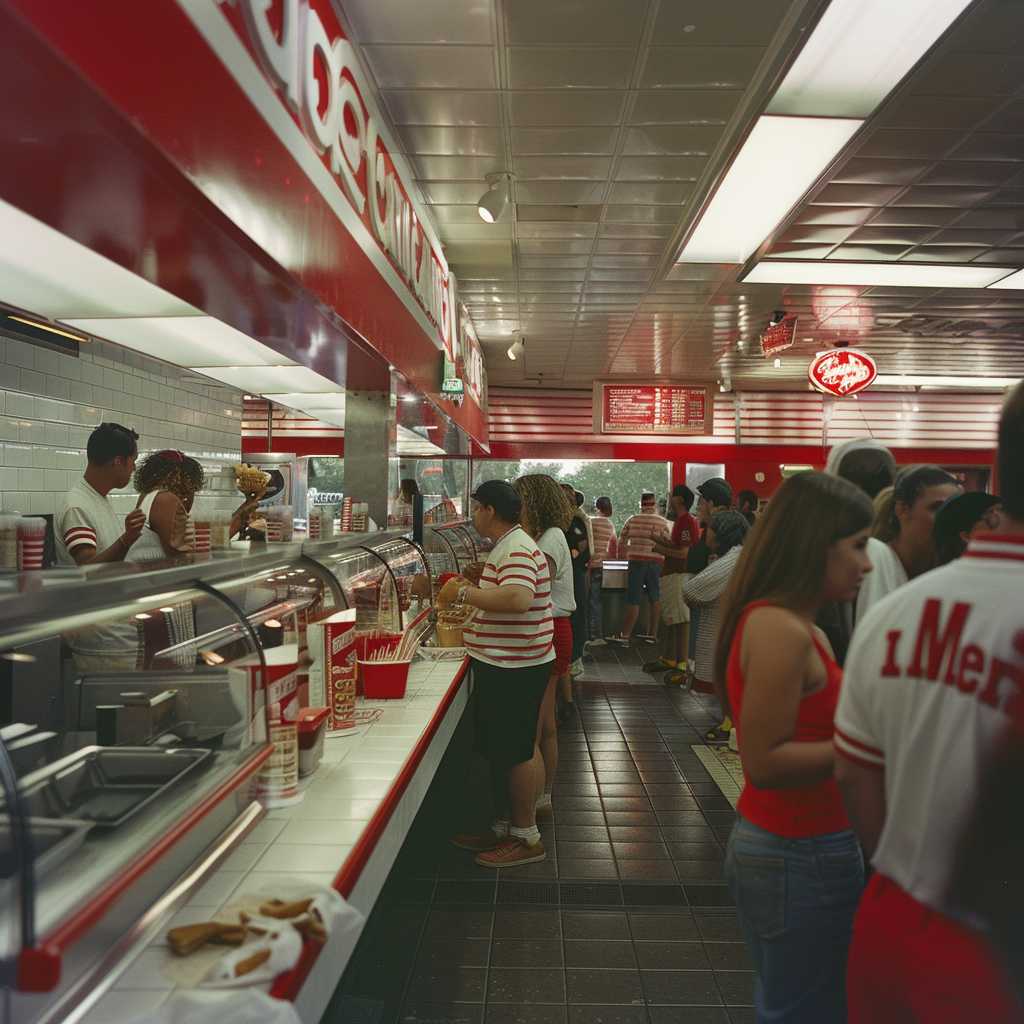The Comprehensive Guide to In-N-Out Burger: A Historical and Culinary Icon of the American West
In-N-Out Burger is an American fast food institution synonymous with fresh, quality hamburgers and an unwavering commitment to excellent customer service. Founded in 1948 by Harry and Esther Snyder in Baldwin Park, California, In-N-Out has not only expanded to various locations across the American Southwest but has also cultivated a nearly cult-like following for its simple menu, iconic “Animal Style” secret offerings, and retro diner aesthetic. This comprehensive article delves into the history, business practices, menu breakdowns, cultural impact, and notable trivia surrounding this revered burger chain.
Origins and Historical Legacy
In the post-World War II era, America experienced a culture shift with an emphasis on convenience and speed, giving rise to the fast food industry. Harry and Esther Snyder tapped into this zeitgeist by opening the first In-N-Out Burger. Their original approach combined two innovative features: quality, made-to-order meals and drive-thru service with a unique two-way speaker box system. The creation of In-N-Out coincided with the influx of car culture in California, making it a staple amidst cruisers and road-trippers.
From these roots, In-N-Out maintained its familial ownership—now in its third generation—with a focus on employee welfare and customer happiness. Despite its growth, In-N-Out Burger has prudently managed its expansion to retain control over operations and maintain its high standards of quality.
Menu and Secret Offerings
In-N-Out’s menu is famously minimalistic, essentially comprising variations of burgers, fries, shakes, and beverages. Their hamburger, cheeseburger, and the signature ‘Double-Double’ (two burger patties and two slices of cheese) are all made with fresh beef—never frozen—along with fresh produce which is evident with each bite.
However, the true enthusiasts are familiar with In-N-Out’s ‘secret menu,’ offering items such as the Protein Style Burger (wrapped in lettuce instead of a bun), Animal Style items (extra spread, pickles, grilled onions, and mustard cooked onto each meat patty), and even a 4×4 (four burger patties with four slices of cheese). This hidden menu creates an interactive experience and keeps customers coming back to try different combinations.
Business Practices: Employee Satisfaction & Corporate Responsibility
In-N-Out stands out for its exceptional employment practices. It offers wages above the minimum wage standard, provides part-time employees with benefits uncommon in the food industry like vacation time and retirement plans, and promotes an internal culture of respect and advancement. This investment in their staff contributes to lower turnover rates than many competitors.
Moreover, In-N-Out has committed itself to various social causes including funding human trafficking victim-resource initiatives through its own Foundation. The company’s focus on renewable initiatives and charity recognizes its corporate responsibilities well beyond serving burgers.
Cultural Impact: “Cult” Following and Brand Advocacy
In-N-Out’s foray into pop culture is demonstrated through its often zealous fan base. Cars lining up around blocks upon new store unveilings illustrate this following vividly. Out-of-state visitors often prioritize visiting an In-N-Out as part of their quintessential California experience.
Compounding its allure is an aggressive apparel lineup branded with logos that play up both its vintage appeal and modern-day streetwear trends. Through these community engagement strategies, In-N-Out has achieved a gentle blend of nostalgic peek into Americana while remaining relevant today.
Strategic Expansion: Measured Growth Other Fast Food Chains May Envy
While many fast-food chains swiftly expand nationally or internationally, In-N-Out Burger has defied industry norms by focusing on slow growth westward from its Southern California origins. They maintain that new locations must be within driving distance of their main distribution facilities to ensure freshness. This strategic inhibition in growth keeps demand high for new franchises.

